[Economic Significance] The basal half of the forewings of most species of adult insects are leathery and the distal half are membranous, making them hemi-elytra. There are often odor glands, some of which can emit a nauseating odor. The body shape and habits of nymphs are similar to those of adults. They suck plant juices or prey on small animals. Some eat agricultural and forestry pests or beneficial insects. A few suck blood and spread diseases.
[Identification points] The body length is 1.5-160 mm, the body wall is hard, relatively flat, often round or elongated, and the body is green, brown or has obvious warning color markings. The antennae are often filamentous, with 3-5 segments, exposed or hidden in the groove under the compound eyes. The mouthparts are piercing and sucking, and the beak is generally 4-segmented, with its insertion point at the front of the head. The pronotum is large, and the small scutes on the middle chest are well developed and exposed. The stink gland hole is located on the ventral surface of the chest.
[Types and distribution] There are more than 38,000 known species in the world, which is one of the major categories in the class Insecta. It is distributed in all major zoogeographic regions around the world. There are more than 3,100 species recorded in China.
The characteristics of this order can be summarized as follows: basal Hymenoptera, with well-developed scutellum exposed on the thorax; piercing and sucking mouthparts with segmented beaks, feeding on land and water animals and plants.
[Classification system and introduction to common families] This order is sometimes called Hemiptera (in a broad sense) together with Homoptera, and this order is called Heteroptera. This order is usually divided into two categories: Cryptocerata and Gymnocerata. Because the former are mostly aquatic insects and the latter are mostly terrestrial insects, they are also called the aquatic group Hydrocorisae and the terrestrial group Geocorisae respectively. At present, some people divide Hemiptera into 7 suborders. Because it is relatively complicated, I will not introduce them here. They are still introduced as follows according to the usual two suborders system.
(1) Cryptocerata
The antennae are shorter than the head and are hidden in the grooves under the compound eyes; they are mostly aquatic species.

A. Belostomatidae
Body length 9-110 mm. The forefoot capture type, the breathing tube at the end of the abdomen is short and flat, and can be retracted. The antennae have 4 segments, and the first 3 segments have leaf-like protrusions on one side. Adult worms have well-developed stink glands.
There are 143 known species in the world, widely distributed. There are 7 species in 3 genera in my country. The large osmanthus cicada Lethocerus indica Lep.&Serv. is edible. They mostly live in still water, often clinging to aquatic plants and waiting for prey. They hunt ferociously. Strong phototaxis. The female lays her eggs on the male's back, and the latter often swims to the water or paddles with her feet to provide the eggs with sufficient oxygen to facilitate hatching.
B. Nepidae
Body length 15-45 mm. The head is flat. There are finger-like protrusions on the 2nd or 2nd and 3rd segments of the antennae. The front feet are catching, and the middle and hind feet are slender, suitable for walking. Each tarsal segment is 1 segment.
Widely distributed in the world, 231 species are known. There are 16 species in 5 genera in my country. It lives in still water and is not good at swimming. It also crawls when moving its feet in the water to feed on various small animals.
C. Notonectidae
Body length 5-15 mm. Often long and narrow, the body gradually becomes narrower and more pointed toward the back, forming a graceful streamline shape. White, off-white or with blue spots. It spends its entire life in the water with its back facing down and its belly facing up. The back of the entire body bulges longitudinally, taking on the shape of a boat bottom. The ventral surface of the abdomen is concave with a longitudinal ridge. The hind feet are well developed, flattened into paddle-like swimming feet, and stretched forward when resting. Predatory.
There are 340 known species in the world, and there are 21 species in my country.
D. Corixidae
The body length is 2.5-15 mm, and the body is mostly long and narrow, with streamlined shapes parallel to both sides. It has the typical zebra-style black horizontal markings on a lighter background, making it easy to identify. The posterior edge of the head more or less covers the pronotum. The forefoot is generally thick and short, with one tarsal segment, which is specially thickened into a spoon shape; the hindfoot is swimming style.
There are more than 550 known species in the world, and there are 51 species in my country. They live in all kinds of still water and slow-flowing water bodies, ranging from small ponds to large lakes. Some species can also survive in high-salt lakes. Basically feed on algae. Most species can pronounce sounds and have strong phototaxis.
(2) Gymnocerata
The antennae are at least equal to the length of the head, 4-5 segments, exposed. The odor glands are developed. Herbivorous. Mostly terrestrial species.
A. Cydnidae
Small to medium-large. Brown, dark brown or black, some species have white or blue-white spots. The tentacles mostly have 5 segments, a few have 4 segments, and are shorter and thicker. The scutellum is about half the length of the forewing or longer. In some species, the scutellum is longer and the end is wide and rounded. The front tibiae are flat and have strong spines on both sides, suitable for digging. There are brush-like hairs on the tops of the middle and hind legs.
There are about 600 known species in the world, widely distributed, and there are more than 50 species in my country. It inhabits the surface and under ground cover, or lives in the rhizosphere of plants and in soil crevices, sucking the roots of plants or the base of stems. Earth bugs can emit a strong odor, and many species have phototaxis. Adults of some species have the habit of protecting eggs, and nymphs have the habit of swarming.
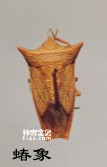
B. Pentatomidae
Small to large, mostly oval, with a flat back and various body colors. The antennae have 5 segments, rarely 4 segments. There is a single eye, and the pronotum is often hexagonal. The scutes are well developed, triangular or tongue-shaped. Beak 4 segments. Hind tibia has no strong spines or small spines. The odor glands are developed.
The Styropodidae is one of the most common large families in the order Hemiptera. It is well-known because of its large size and multi-camp life. There are 4,100 known species in the world, and there are 360 species in my country. Live on plants, mostly herbivorous. They like to suck fruits or seeds, and also suck plant juices. Many species are agricultural and forestry pests. Common ones include rice bugs, rice green bugs, etc.
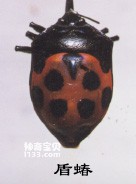
C. Scutelleridae
Small to medium-large. The back is strongly rounded and the ventrally is flat and oval. Many species have bright colors and patterns. The head is short and wide. Antennae 4 or 5 segments. The scutes are extremely large and U-shaped, covering the entire abdomen and most of the forewings. The forewings are as long as the body, and the diaphragm cannot be folded back. The odor glands are developed.
There are 450 known species in the world, widely distributed, and more common in tropical and subtropical regions. About 40 species are known in my country. Live on plants, and larger species often live on trees. It is herbivorous and often prefers to suck fruits, which can cause various harms. Common ones include the stink bug, the camellia stink bug, and the camellia stink bug.
D. Plataspiddae
Small to medium-sized. Body short and wide, with trailing edge more or less truncate. Trapezoidal or obovate, with flat ventral surface and rounded back surface, slightly turtle-shaped or bean-shaped. Black and shiny, often with yellow markings. It is similar to the family Shield Bug, but its body is small and round, its forewings are longer than its body, and its diaphragm can be folded back. The anterior part of the lateral edge of the pronotum extends in a leaf-like manner to both sides.
There are more than 500 known species in the world, distributed in the Old World, with rich tropical and subtropical species. There are more than 90 species in our country. Most of them live on plant branches, and a few live in cracks in the bark. They often gather in small groups and can emit a strong odor. There are many species that use leguminous plants as hosts. Common ones include round turtle bugs, bean turtle bugs, etc.
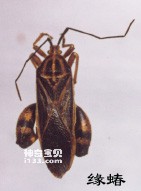
E. Coreidae
Medium to large. Body shapes vary, often oval. The body is yellow, brown, dark brown or bright green, and some species have bright patterns. Often secretes a strong odor. The antennae have 4 segments, the beak has 4 segments, it has a single eye, and there are 8-9 veins on the diaphragm of the wings.
There are about 1,800 known species in the world, which are widely distributed, mostly in warm and hot areas. There are nearly 200 species in our country. All are herbivorous, sucking the sap of the host, especially flowers and fruits. Many species cause hazards as a result. Common ones include the rice bug, etc.
F. Lygaeidae
Tiny to medium sized. Body shapes vary, often oval. Dull, but a few species are bright red with large black spots. Similar to Trichodermaidae, but with 4-5 veins on the forewing membrane.
There are about 4,000 known species in the world, widely distributed. There are about 320 species in our country. Lives on the surface and among ground covers and on plants, the latter including in leaf sheaths, capsules, and under the fruit scales of coniferous cones. There are quite a few species that like to eat fruits and seeds, and there are also many species that suck plant juices. There are many types of nymph mimic ants. Important pests include the sorghum bug Dimorphopterus japonicus Hidaka and others.
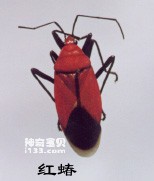
G. Pyrrhocoridae
Medium to large. Oval, mostly bright red with black spots. The antennae have 4 segments, the beak has 4 segments, and there is no single eye.
There are about 300 known species in the world, which are widely distributed, mainly in warm and hot zones. There are 36 species in our country. Herbivorous, feeding on fruits and seeds. Common ones include cotton bugs, etc.

H. Miridae
Small to medium-sized, with various body shapes. Most of them have no single eye, their bodies are relatively weak, and their feet often break off easily. The forewings are often folded, with only two wing chambers, one large and one small, on the diaphragm, and the rest of the wing veins disappear.
This family is the largest family in the order Hemiptera, with about 10,000 species known in the world and widely distributed. There are more than 560 known species in my country, and the actual number is estimated to be up to a thousand. They mostly live on plants, are active and good at flying, and like to eat the flowers and fruits of plants. Some groups prey on aphids, mites and other small animals and insect eggs. Some species can also eat both plant and animal food. Common ones include the green stink bug, etc.

I. Tingididae
Small to medium size. The body is mostly flat, with relatively wide and flat forewings, and the body color lacks bright colors. The pronotum and forewings are covered with patterns composed of grid-like ridges, which are easy to identify.
There are more than 2,000 known species in the world, distributed worldwide. There are more than 170 species in our country. Lives on plants, mostly on the underside of leaves, especially nymphs. There are also species that live in cracks in tree bark, between ground covers and under layers of moss. All are herbivorous, and a few can form galls. Common ones include the bright-crowned stink bug, etc.
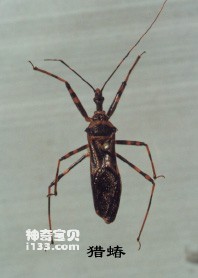
J. Reduviidae
Small to large, with body length up to 40 mm. Body shapes are extremely diverse. Most species have hard body walls that are yellow, brown or black, and many species have bright red spots. The head often becomes thinner and elongated behind the eyes. The antennae have 4 segments and the beak has 3 segments. The beak does not extend to the base of the midfoot. The front legs of many species are specialized as capture legs.
There are about 6,800 known species in the world, which are widely distributed, especially in warm and hot zones. About 400 species are known in my country. Almost all are predatory, capturing insects, spiders and myriapods. Different species have different choices and preferences for prey.
K. Anthocoridae
Small, oval, flat back. Tentacles 4 segments. The beak has 4 segments, the 2nd segment is very short, and the beak extends to the base of the midfoot. There is no closed wing chamber on the forewing diaphragm, and there are few wing veins.
There are more than 500 known species in the world, widely distributed. 90 species are known in my country. Lives on plants, often found in flowers, bark, leaf axils, and under the fruit scales of cones. Some species live in ground cover and animal nests, and are mainly predatory, preying on small animals such as aphids, mites, scale insects, thrips, and psyllids. The common ones include the small flower bug, the proto-flower bug, etc.
L. Saldidae
Body length 2.3-7.4 mm, oval, relatively flat. Gray, gray or black, often with some light or dark spots. The compound eyes are large. The antennae have 4 segments and the beak has 3 segments. The beak extends to the base of the midfoot. There are 4-5 wing chambers on the forewing diaphragm.
There are more than 260 known species in the world, widely distributed, with more in the northern hemisphere. There are 39 species in our country. Jumping bugs are quite common in nature. They live in swamp banks and intertidal zones of rivers and lakes. They move on the surface or fly low. They are agile and have good protective coloring, making them difficult to detect. There are also some species that live in dry environments, and some species that have strong cold tolerance.
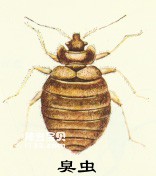
M. Cimicidae
Commonly known as bed bugs, small to medium-sized. Oval, flat, reddish brown. Almost wingless in appearance. There is no single eye, 4-segmented antennae, and 3-segmented beak. The wings have degenerated, leaving only triangular remnants of the base of the forewings.
There are about 90 known species in the world, which are widely distributed, mostly in warm and hot areas. There are few studies in my country, and only three species have been recorded. Among them, the temperate bedbug Cimex lectularis L. and the tropical bedbug C.hemipterus (Fabricius) suck human blood in the living room.
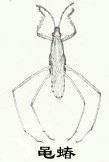
N. Gerridae (Gerridae)
The body size varies greatly, ranging from 1.7 mm to 36 mm, with the majority of the species being narrow and long. In most species, the entire body is covered with water-repellent hairs composed of microhairs. There is no single eye, and the first segment of the antennae is very long. The forefoot is thick, short and deformed, and has a grabbing function. The middle and hind feet are extremely slender and extend sideways, and the leg joints and shin joints are equal in length.
Distributed worldwide, about 530 species are known. A total of 75 species have been recorded in my country. They live almost all their lives above the water and prefer open water areas not covered by aquatic plants. Common ones include Aquarius paludum (Fabricius) and so on.
animal tags: insect hemiptera bug
We created this article in conjunction with AI technology, then made sure it was fact-checked and edited by a Animals Top editor.